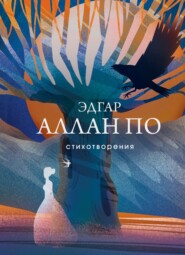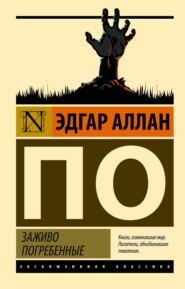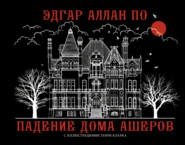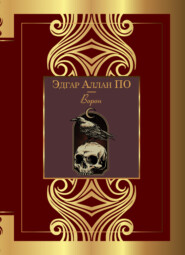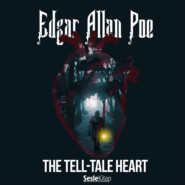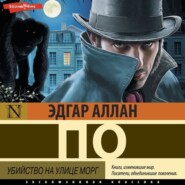По всем вопросам обращайтесь на: info@litportal.ru
(©) 2003-2025.
✖
Selections from Poe
Настройки чтения
Размер шрифта
Высота строк
Поля
6. Petrarchan stuff: of or by Petrarch (1304-1374), a famous Italian writer of sonnets.
10. tuckermanities: a contemptuous allusion to the poetic efforts of Henry T. Tuckerman, a New England writer of the day.
14. dear names: Sarah Anna Lewis, a verse writer of the day, whom Poe admired.
TO HELEN (Page 35)
Published in November, 1848; addressed to Mrs. Sarah Helen Whitman (see Introduction, page xvii). Although her engagement to marry Poe was broken off, she continued to admire him and was faithful to his memory after his death. The poem was written before Poe met Mrs. Whitman, and is said to have been suggested by the poet's having caught a glimpse of the lady walking in a garden by moonlight.
48. Dian: Diana, the moon goddess.
66. Venuses: refers at once to the planet Venus and to Venus, goddess of love.
A VALENTINE (Page 37)
Published in 1849. The name is found as in "An Enigma," by reading the first letter of the first line, the second of the second, and so on.
2. twins of Leda: Castor and Pollux, two stars in the constellation Gemini. For the myth consult Gayley's "Classic Myths."
3. her own sweet name: Frances Sargent Osgood. See note on the lines "To F – ," page 185.
10. Gordian knot. Explain this; consult an encyclopedia.
14. perdus: lost, a French word introduced to rhyme with "too."
17. lying: used in a double sense.
18. Mendez Ferdinando Pinto, a Portuguese traveler (1509-1583), was said to have been the first white man to visit Japan. He wrote an account of his travels, which at the time was considered mere romancing.
FOR ANNIE (Page 37)
Published in 1849, and addressed to Mrs. Richmond of Lowell, Massachusetts. This is the "Annie" so frequently referred to in biographies of Poe, who also figures in his correspondence. Of all the women associated with Poe's later years (see Introduction, pages ), "Annie" was the object of his most sincere and ardent friendship, and was his confidant in all his troubles, – including the courtship of Mrs. Whitman. Poe and Mrs. Clemm were frequent visitors at her home, and the latter found shelter there for a time after her "Eddie's" death.
This poem is usually regarded as one of the author's poorest, though it has a distinctly individual character that must be recognized. Thus Professor C.F. Richardson, in his "American Literature," quoting several stanzas, remarks, "This is doggerel, but it is Poe's special doggerel." Some of the lines really deserve this severe epithet, but hardly the entire poem. Its theme seems to be peace in death through the affection of Annie, following a life of passion and sorrow, and so regarded, it has some strength.
THE BELLS (Page 41)
Published in 1849. Read the comment on this poem in the Introduction, page xxv. Though not especially characteristic of him, this is one of Poe's most remarkable poems, as well as one of the most popular. A very interesting account of its composition may be found in Woodberry's biography, pages 302-304, or in Harrison's biography, pages 286-288, or in the Stedman-Woodberry edition of Poe's Works, Vol. X, pages 183-186.
10. Runic. Runes are the characters of the alphabet of the early Germanic peoples. The allusion is intended to suggest mystery and magic. Consult an unabridged dictionary or an encyclopedia.
23. gloats. What does the word mean here? Cf. line 76 of "The Raven," and corresponding notes.
ANNABEL LEE (Page 44)
Published in the _New York Tribune, _October 9, 1849, two days after the poet's death. Read the comment in the Introduction, page xxv. Note the mid-rhymes in line 26, "chilling and killing," and in line 32, "ever dissever"; point out other examples in "The Raven" and other poems.
TO MY MOTHER (Page 46)
Published in 1849; in form, a regular Shakespearean sonnet. It is a sincere tribute addressed to Mrs. Clemm, mother of Poe's girl wife, Virginia, a woman who was more than worthy of it. The tenderest affection existed between the two, and Mrs. Clemm cared for him after Virginia's death and grieved profoundly at his own. She lived until 1871.
ELDORADO (Page 46)
This first appeared in the Griswold edition of 1850; no earlier publication is known. It was probably Poe's last composition, and this story of the knight's quest, its failure, and his gaze turned to "the Valley of the Shadow," is a fitting finale for the ill-starred poet (see comment in the Introduction, page xxv).
Eldorado: a fabled city or country abounding in gold and precious stones, and afterward any place of great wealth. The word is often used figuratively. In a preface to an early volume of his poetry, Poe alludes quite incidentally to "the poet's own kingdom – his El Dorado," and in this sense the metaphor may be accepted here.
Note the varying sense of the recurring rhyme, shadow. In the first stanza it is simply contrasted with the "sunshine" or happiness of life, in the second it implies the coming of discouragement and despair, in the third it is the shadow of death cast before, in the fourth the Valley of the Shadow of Death.
THE HAUNTED PALACE (Page 59)
Published in the Baltimore Museum in April, 1839, and in September of the same year in Burton's Gentleman's Magazine as part of the tale "The Fall of the House of Usher"; afterwards published in 1840, 1843, and 1845. It was altered very slightly in revision. Lowell wrote that he knew of no modern poet who might not justly be proud of it (see Introduction, pages xxiii-xxiv).
59. 24. Porphyrogene: from Greek words meaning "purple" and "begotten," hence, born in the purple, royal. This term, or "porphyrogenitus," was applied in the Byzantine empire to children of the monarch born after his accession to the throne. It is not clear whether the word is used here as a descriptive adjective or as the name of the monarch.
TALES
THE FALL OF THE HOUSE OF USHER (Page 49)
Published first in 1839, and several times reprinted with revisions. Read the comment in the Introduction, page xxvii. Lowell said of this story: "Had its author written nothing else, it would alone have been enough to stamp him as a man of genius, and a master of a classic style."
This tale is one of the best to study as an example of the application of Poe's critical theory of the short story (see Introduction, page xxvi). What is the "effect" sought? Is the main incident of the tale well adapted to produce this effect? Are the parts skillfully related to one another and to the whole? Is the setting suitable to the theme? What is the effect of the first sentence? Pick out a number of rather unusual words which Poe seems particularly to like; observe their effect. The adjectives are especially worth study; in the first sentence try the effect of substituting for "soundless," "quiet," or "silent," or "noiseless."
49. Quotation: "His heart is a suspended lute; as soon as it is touched it resounds." P.J. Béranger (1780-1857), a popular French lyric poet.
50. 12. black and lurid tarn: see note to line 8 of "Ulalume," page 189. Tarn is one of several words Poe particularly liked.
58. 10. low cunning. See if the reason for this encounter appears later.
58 31. ennuyé: a French word meaning "wearied," "bored."
54. 5-24. The description of Usher is in the main a remarkably good portrait of Poe himself.
55. 20-30. Observe the extreme to which Poe goes in this study of terror; it is the fear of fear that oppresses Usher.
56. 2. too shadowy here to be re-stated. Note the effect of making this weird suggestion instead of a clear statement.
57. 26. Von Weber (1786-1826), a famous German composer.
58. 5. Henry Fuseli, or Fuesli (1742-1825), as he was known in England, was born in Zurich, Switzerland, and named Johann Heinrich Fuessli. He was a professor in the Royal Academy and painted a series of highly imaginative pictures illustrating Shakespeare and Milton.
59. The Haunted Palace. For notes see page 192.
60. 30-31. Richard Watson (1737-1816), Bishop of Llandaff, was for a time professor of chemistry at Cambridge University and wrote popular essays on that subject. James Gates Percival (1795-1856) was an American poet, musician, linguist, surgeon, and scientist; it is possible the reference is to Thomas Percival (1740-1804), an English physician. Lazzaro Spallanzani (1729-1799) was an Italian naturalist, distinguished in experimental physiology.
61. 22-31. All of these titles have been traced, except the last, which Poe either invented, or, in quoting, altered. Some of the works named he apparently had not read, since their character is not suited to his purpose. Jean Baptiste Louis Gresset (1709-1777) was a French poet and playwright; the two works mentioned are poems, – the first, a tale of an escaped parrot who stopped at a convent and shocked the nuns by his profanity. Niccolo Machiavelli (1469-1527) was a famous Italian historian and statesman, who wrote a celebrated treatise called "The Prince"; "Belphegor" is a satire on marriage. Emanuel Swedenborg (1688-1772) was an eminent Swedish theologian and religious mystic. Ludvig Holberg (1684-1754) was a great Danish poet and novelist; the work mentioned is one of his best known poems and has been translated into the principal languages of Europe. Flud, Robert Fludd (1574-1637), was an English physician, inventor, and mystic philosopher. Jean D'Indaginé (flourished in the first half of the sixteenth century) was a priest of Steinheim, Germany, who wrote on palmistry and similar subjects. Marin Cureau de la Chambre (1594-1675), physician to Louis XIV, who was an adept in physiognomy, and wrote a work on "The Art of Judging Men." Ludwig Tieck (1773-1853) was a German romantic novelist. Tommaso Campanella (1568-1639) was an Italian monk and philosopher, who suffered persecution by the Inquisition. Eymeric, Nicolas Eymericus (1320-1399), was a native of Gerona, Spain, who entered the Dominican order and rose to the rank of chaplain to the Pope and Grand Inquisitor; his famous "Directorium Inquisitorum" is an elaborate account of the Inquisition. Pomponius Mela was a Latin writer of the first century A.D., who wrote a famous work on geography "De Situ Orbis" (Concerning the Plan of the Earth).
61. 31. Satyrs and Ægipans: in classic mythology the satyrs and minor deities of wood and field, with the body of a man and the feet, hair, and horns of a goat; Ægipans is practically equivalent to, and is also an epithet of Pan, the satyr-like rural god.
10. tuckermanities: a contemptuous allusion to the poetic efforts of Henry T. Tuckerman, a New England writer of the day.
14. dear names: Sarah Anna Lewis, a verse writer of the day, whom Poe admired.
TO HELEN (Page 35)
Published in November, 1848; addressed to Mrs. Sarah Helen Whitman (see Introduction, page xvii). Although her engagement to marry Poe was broken off, she continued to admire him and was faithful to his memory after his death. The poem was written before Poe met Mrs. Whitman, and is said to have been suggested by the poet's having caught a glimpse of the lady walking in a garden by moonlight.
48. Dian: Diana, the moon goddess.
66. Venuses: refers at once to the planet Venus and to Venus, goddess of love.
A VALENTINE (Page 37)
Published in 1849. The name is found as in "An Enigma," by reading the first letter of the first line, the second of the second, and so on.
2. twins of Leda: Castor and Pollux, two stars in the constellation Gemini. For the myth consult Gayley's "Classic Myths."
3. her own sweet name: Frances Sargent Osgood. See note on the lines "To F – ," page 185.
10. Gordian knot. Explain this; consult an encyclopedia.
14. perdus: lost, a French word introduced to rhyme with "too."
17. lying: used in a double sense.
18. Mendez Ferdinando Pinto, a Portuguese traveler (1509-1583), was said to have been the first white man to visit Japan. He wrote an account of his travels, which at the time was considered mere romancing.
FOR ANNIE (Page 37)
Published in 1849, and addressed to Mrs. Richmond of Lowell, Massachusetts. This is the "Annie" so frequently referred to in biographies of Poe, who also figures in his correspondence. Of all the women associated with Poe's later years (see Introduction, pages ), "Annie" was the object of his most sincere and ardent friendship, and was his confidant in all his troubles, – including the courtship of Mrs. Whitman. Poe and Mrs. Clemm were frequent visitors at her home, and the latter found shelter there for a time after her "Eddie's" death.
This poem is usually regarded as one of the author's poorest, though it has a distinctly individual character that must be recognized. Thus Professor C.F. Richardson, in his "American Literature," quoting several stanzas, remarks, "This is doggerel, but it is Poe's special doggerel." Some of the lines really deserve this severe epithet, but hardly the entire poem. Its theme seems to be peace in death through the affection of Annie, following a life of passion and sorrow, and so regarded, it has some strength.
THE BELLS (Page 41)
Published in 1849. Read the comment on this poem in the Introduction, page xxv. Though not especially characteristic of him, this is one of Poe's most remarkable poems, as well as one of the most popular. A very interesting account of its composition may be found in Woodberry's biography, pages 302-304, or in Harrison's biography, pages 286-288, or in the Stedman-Woodberry edition of Poe's Works, Vol. X, pages 183-186.
10. Runic. Runes are the characters of the alphabet of the early Germanic peoples. The allusion is intended to suggest mystery and magic. Consult an unabridged dictionary or an encyclopedia.
23. gloats. What does the word mean here? Cf. line 76 of "The Raven," and corresponding notes.
ANNABEL LEE (Page 44)
Published in the _New York Tribune, _October 9, 1849, two days after the poet's death. Read the comment in the Introduction, page xxv. Note the mid-rhymes in line 26, "chilling and killing," and in line 32, "ever dissever"; point out other examples in "The Raven" and other poems.
TO MY MOTHER (Page 46)
Published in 1849; in form, a regular Shakespearean sonnet. It is a sincere tribute addressed to Mrs. Clemm, mother of Poe's girl wife, Virginia, a woman who was more than worthy of it. The tenderest affection existed between the two, and Mrs. Clemm cared for him after Virginia's death and grieved profoundly at his own. She lived until 1871.
ELDORADO (Page 46)
This first appeared in the Griswold edition of 1850; no earlier publication is known. It was probably Poe's last composition, and this story of the knight's quest, its failure, and his gaze turned to "the Valley of the Shadow," is a fitting finale for the ill-starred poet (see comment in the Introduction, page xxv).
Eldorado: a fabled city or country abounding in gold and precious stones, and afterward any place of great wealth. The word is often used figuratively. In a preface to an early volume of his poetry, Poe alludes quite incidentally to "the poet's own kingdom – his El Dorado," and in this sense the metaphor may be accepted here.
Note the varying sense of the recurring rhyme, shadow. In the first stanza it is simply contrasted with the "sunshine" or happiness of life, in the second it implies the coming of discouragement and despair, in the third it is the shadow of death cast before, in the fourth the Valley of the Shadow of Death.
THE HAUNTED PALACE (Page 59)
Published in the Baltimore Museum in April, 1839, and in September of the same year in Burton's Gentleman's Magazine as part of the tale "The Fall of the House of Usher"; afterwards published in 1840, 1843, and 1845. It was altered very slightly in revision. Lowell wrote that he knew of no modern poet who might not justly be proud of it (see Introduction, pages xxiii-xxiv).
59. 24. Porphyrogene: from Greek words meaning "purple" and "begotten," hence, born in the purple, royal. This term, or "porphyrogenitus," was applied in the Byzantine empire to children of the monarch born after his accession to the throne. It is not clear whether the word is used here as a descriptive adjective or as the name of the monarch.
TALES
THE FALL OF THE HOUSE OF USHER (Page 49)
Published first in 1839, and several times reprinted with revisions. Read the comment in the Introduction, page xxvii. Lowell said of this story: "Had its author written nothing else, it would alone have been enough to stamp him as a man of genius, and a master of a classic style."
This tale is one of the best to study as an example of the application of Poe's critical theory of the short story (see Introduction, page xxvi). What is the "effect" sought? Is the main incident of the tale well adapted to produce this effect? Are the parts skillfully related to one another and to the whole? Is the setting suitable to the theme? What is the effect of the first sentence? Pick out a number of rather unusual words which Poe seems particularly to like; observe their effect. The adjectives are especially worth study; in the first sentence try the effect of substituting for "soundless," "quiet," or "silent," or "noiseless."
49. Quotation: "His heart is a suspended lute; as soon as it is touched it resounds." P.J. Béranger (1780-1857), a popular French lyric poet.
50. 12. black and lurid tarn: see note to line 8 of "Ulalume," page 189. Tarn is one of several words Poe particularly liked.
58. 10. low cunning. See if the reason for this encounter appears later.
58 31. ennuyé: a French word meaning "wearied," "bored."
54. 5-24. The description of Usher is in the main a remarkably good portrait of Poe himself.
55. 20-30. Observe the extreme to which Poe goes in this study of terror; it is the fear of fear that oppresses Usher.
56. 2. too shadowy here to be re-stated. Note the effect of making this weird suggestion instead of a clear statement.
57. 26. Von Weber (1786-1826), a famous German composer.
58. 5. Henry Fuseli, or Fuesli (1742-1825), as he was known in England, was born in Zurich, Switzerland, and named Johann Heinrich Fuessli. He was a professor in the Royal Academy and painted a series of highly imaginative pictures illustrating Shakespeare and Milton.
59. The Haunted Palace. For notes see page 192.
60. 30-31. Richard Watson (1737-1816), Bishop of Llandaff, was for a time professor of chemistry at Cambridge University and wrote popular essays on that subject. James Gates Percival (1795-1856) was an American poet, musician, linguist, surgeon, and scientist; it is possible the reference is to Thomas Percival (1740-1804), an English physician. Lazzaro Spallanzani (1729-1799) was an Italian naturalist, distinguished in experimental physiology.
61. 22-31. All of these titles have been traced, except the last, which Poe either invented, or, in quoting, altered. Some of the works named he apparently had not read, since their character is not suited to his purpose. Jean Baptiste Louis Gresset (1709-1777) was a French poet and playwright; the two works mentioned are poems, – the first, a tale of an escaped parrot who stopped at a convent and shocked the nuns by his profanity. Niccolo Machiavelli (1469-1527) was a famous Italian historian and statesman, who wrote a celebrated treatise called "The Prince"; "Belphegor" is a satire on marriage. Emanuel Swedenborg (1688-1772) was an eminent Swedish theologian and religious mystic. Ludvig Holberg (1684-1754) was a great Danish poet and novelist; the work mentioned is one of his best known poems and has been translated into the principal languages of Europe. Flud, Robert Fludd (1574-1637), was an English physician, inventor, and mystic philosopher. Jean D'Indaginé (flourished in the first half of the sixteenth century) was a priest of Steinheim, Germany, who wrote on palmistry and similar subjects. Marin Cureau de la Chambre (1594-1675), physician to Louis XIV, who was an adept in physiognomy, and wrote a work on "The Art of Judging Men." Ludwig Tieck (1773-1853) was a German romantic novelist. Tommaso Campanella (1568-1639) was an Italian monk and philosopher, who suffered persecution by the Inquisition. Eymeric, Nicolas Eymericus (1320-1399), was a native of Gerona, Spain, who entered the Dominican order and rose to the rank of chaplain to the Pope and Grand Inquisitor; his famous "Directorium Inquisitorum" is an elaborate account of the Inquisition. Pomponius Mela was a Latin writer of the first century A.D., who wrote a famous work on geography "De Situ Orbis" (Concerning the Plan of the Earth).
61. 31. Satyrs and Ægipans: in classic mythology the satyrs and minor deities of wood and field, with the body of a man and the feet, hair, and horns of a goat; Ægipans is practically equivalent to, and is also an epithet of Pan, the satyr-like rural god.








